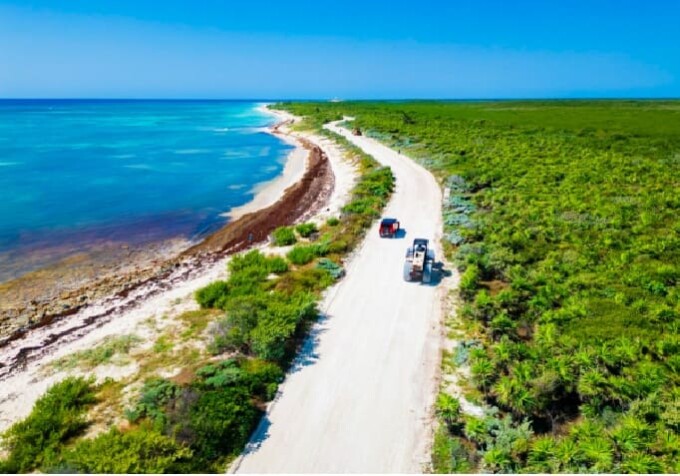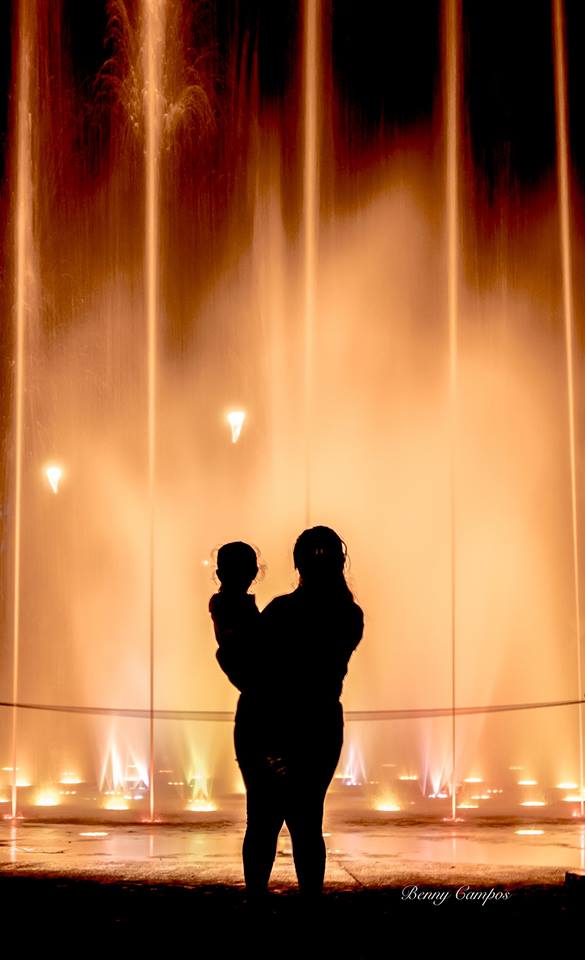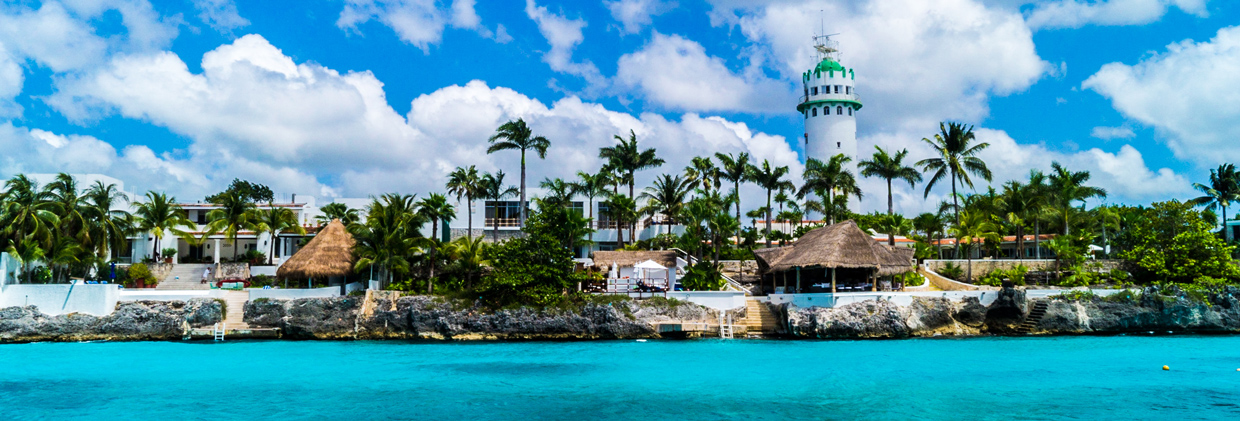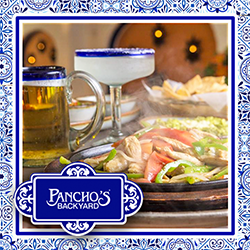The Morenita: The Virgin of Guadalupe: Cozumel 4 You
by Monica Sauza
One of many consequences of the Spanish conquest (1519-1521) was religious syncretism. This merger of beliefs, amongst others, brought about one of the most respected images of the catholic faith: The Virgin of Guadalupe. The Aztecs worshipped Tonantzin: ‘Mother Earth’, ‘Goddess of Sustenance’, ‘Honored Grandmother’, ‘Mother of Corn’, ‘the Mother of Everything that Exists’; this was a wide-ranging name given to Aztec goddesses. Following the arrival of the Conquistadors many temples were destroyed as it was thought that the indigenous people worshipped the devil. Upon the hill of Tepeyac, outside Mexico City, Aztecs had built a temple devoted to Tonantzin.
In their continuous efforts to convert the people into the new religion, the Spaniards demolished the Aztec temple and built a chapel on the Tepeyac dedicated to Virgin Mary; but the indigenous peoples continued addressing her as Tonantzin. The Miracle, as the apparitions of the Virgin are known, was transmitted orally; and around 1540 the narration in Náhuatl, the Aztec language, was written in a text known asNicam Mopahua. The oldest copy is in the Public Library of New York, Rare Books and Manuscripts Department. It is believed that in her apparitions Virgin Mary used the Náhuatl term Coatlaxopeuh which, when pronounced, sounds like “cuatlasupe“, phonetically similar to the name Guadalupe. Coa means snake and xopeuh means crush. Thus it is believed that Our Lady must have referred herself as “the one that crushes the snake.” The name she was then given was: Tonantzin-Guadalupe.
Ten years after the Spanish conquest, on December 9, 1531 at dawn, Juan Diego Cuauhtlatoatzin, ‘he who speaks like an eagle’, a devoted mid-fifties widower, was walking to attend mass at a church nearby in Tlatelolco. As he passed Tepeyac, he suddenly heard beautiful music, songbirds, saw a strange glimmer at the top of the hill and a soft voice calling him: “Juanito; dear Juan Dieguito”. When he reached the top, he saw a beautiful girl surrounded by a rainbow and bathed in celestial splendor. She said: “I am Virgin Mary, Mother of the one true God.” She revealed to him her wish: that a temple built in that place, that as a merciful mother she would profess all her love and compassion to all who dwelled in that land and sought her protection; there she would listen to their sorrows, cure their sufferings and afflictions.“…Run now and tell the Lord Bishop what you have seen and heard….” The Bishop politely told Juan Diego he would consider the Lady’s request. On December 10, the second apparition, Juan returned discouraged to the hill and found the Virgin waiting for him. Juan Diego asked her to find someone more suitable to deliver the message; “I have chosen you for this task, there are many I could send…tomorrow morning go to the Bishop and tell him the holy Virgin Mary, Mother of God, sends you and repeat my wishes.” Surprised to see Juan Diego again, the Bishop told him to ask the Virgin for a sign. On the third apparition, Juan conveyed the message to the Virgin who, in turn, asked him to return the following morning, but Juan Diego’s uncle, Juan Bernardino, fell ill so he stayed home with his dying uncle. Early on December 12, Juan Diego went looking for a priest who could give his uncle the last blessings; he avoided walking through the route where he had met the Virgin, but she intercepted him. He apologized and explained his uncle’s conditions. Mary said, “The smallest of my children, do not be distressed and afraid. Am I not here I who am your Mother? … Your uncle will not die at this time. His health is restored. Go to the top of the hill; cut the flowers that are growing there and bring them to me.” Juan Diego was obedient but could not believe he would find flowers in the cold of December. When he reached the hilltop he found beautiful roses, cut them and wrapped them in his tilma (rough cloak) and returned to Mary.
“My little son, this is the sign I am sending the Bishop…Remember son, you are my trusted ambassador; this time the Bishop will believe you.” That was the last time Juan Diego saw the Virgin. Juan Diego explained to the Bishop what had passed, and unwrapped his tilma. The roses fell to the ground. The Bishop fell on his knees as the image of the Blessed Virgin appeared imprinted on the tilma.
While Juan Diego was calling on the Bishop, the dying uncle, suddenly found his room filled by a soft light. A glowing young woman appeared. She said he would get well and that she had sent his nephew, Juan Diego, to the Bishop with an image of herself and said, “Call me and call my image Our Lady of Guadalupe.”
In 1666 the chapel at the hilltop of Tepeyac was built and as too many pilgrims came to visit the Lady, a larger one was built in the XVIth. Century. By 1904 it was considered a Basilica, and the construction of the current and much larger Basilica began in 1974, next to the original one and to the Convent of the Capuchin nuns, where the image of the Virgin of Guadalupe is housed. It is estimated that the Basilica receives up to 10 million devoted pilgrims every year. Respects have been paid to the Virgin of Guadalupe not only by Popes but also by Tibetan monks who honored her with their chants. Pope John Paul II declared the Virgin of Guadalupe as the Patron of the Americas (1999), all the way from Canada to Tierra del Fuego, and canonized Juan Diego in 2000. Her image has suffered serious assaults but has come unscathed from corrosive acids and even a bomb in 1921; the resulting damage bent a metal crucifix next to the image, but both the protecting glass and the image of the Virgin were undamaged. Her image, which has no brush strokes, and particularly her eyes, has been scientifically examined, even by NASA. In Mexico, the Virgin of Guadalupe is the image par excellence that represents the faith of many Catholics.
*Morenita is an affectionate way of calling a woman of tanned complexion
Monica Sauza, is an official translator for the Supreme Court of the State. She’s been a Cozumel resident for many years.
This story originally appeared in the weekly Cozumel 4 You NEWS – the island’s number one source of positive information about our island! Be sure and subscribe to the weekly NEWS to find out all the island events!…
Otra fugitiva de la Ciudad de México. Mónica ha hecho de Cozumel su hogar definitivo. Desde su llegada en 1981, trabajo en turismo en todos los lugares habituales: hoteles, buceo, aeropuerto, ferries, hasta que se abrió la oportunidad de desempeñarse en su campo. Desde finales de la década de los años 70 Mónica ha estado traduciendo e interpretando, dedicándose plenamente a ello a partir de 1998, y ha asistido a extranjeros y locales de la Isla a establecer su residencia y sus negocios. Es traductora con gran experiencia, ávida historiadora y una gran fuente de tradiciones y leyendas locales.
- Mexican History 3 Kings Day - January 8, 2025
- 2025 Mexican National Holidays - January 3, 2025
- Mayan Weather Predictions - January 2, 2025
Another escapee from Mexico City, Monica has made Cozumel her definite home. Since her arrival -in 981- she worked in tourism in all the usual venues: hotels, scuba diving, airport, ferries, until the opportunity to practice in her chosen field grew. Since the latter part of the 70s Monica has been translating and interpreting, fully devoting herself to it since 1998, and has assisted foreigners and Island residents establish residence and businesses- She is a Translator with extensive experience, an avid historian and a great source of local lore and legends. Otra fugitiva de la Ciudad de México. Mónica ha hecho de Cozumel su hogar definitivo. Desde su llegada en 1981, trabajo en turismo en todos los lugares habituales: hoteles, buceo, aeropuerto, ferries, hasta que se abrió la oportunidad de desempeñarse en su campo. Desde finales de la década de los años 70 Mónica ha estado traduciendo e interpretando, dedicándose plenamente a ello a partir de 1998, y ha asistido a extranjeros y locales de la Isla a establecer su residencia y sus negocios. Es traductora con gran experiencia, ávida historiadora y una gran fuente de tradiciones y leyendas locales.
Cozumel Punta Sur Road Repair
Cozumel Punta Sur Road Repair Cozumel’s Punta Sur Road to Have...
Mexican History 3 Kings Day
Mexican History 3 Kings Day The Significance of January 6th & February...
New Year’s Traditions Mexico
New Year’s Traditions Mexico New Year’s Traditions and Rituals in Mexico....
Mayan Weather Predictions
Mayan Weather Predictions Honoring Traditions: “Las Cabañuelas,” Mayan Weather Predictions The weather...





















Leave a comment